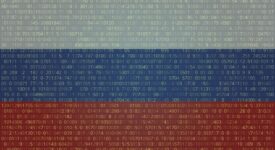
reader comments
40 with
Debugging a faulty program can be frustrating, so why not let AI do it for you? That’s what a developer that goes by “BioBootloader” did by creating Wolverine, a program that can give Python programs “regenerative healing abilities,” reports Hackaday. (Yep, just like the Marvel superhero.)
“Run your scripts with it and when they crash, GPT-4 edits them and explains what went wrong,” wrote BioBootloader in a tweet that accompanied a demonstration video. “Even if you have many bugs it’ll repeatedly rerun until everything is fixed.”
GPT-4 is a multimodal AI language model created by OpenAI and released in March, available to ChatGPT Plus subscribers and in API form to beta testers. It uses its “knowledge” about billions of documents, books, and websites scraped from the web to perform text processing tasks such as composition, language translation, and programming.
Today I used GPT-4 to make “Wolverine” – it gives your python scripts regenerative healing abilities!
Run your scripts with it and when they crash, GPT-4 edits them and explains what went wrong. Even if you have many bugs it’ll repeatedly rerun until everything is fixed pic.twitter.com/gN0X7pA2M2
— BioBootloader (@bio_bootloader) March 18, 2023
In the demo video for Wolverine, BioBootloader shows a side-by-side window display, with Python code on the left and Wolverine results on the right in a terminal. He loads a custom calculator script in which he adds a few bugs on purpose, then executes it.
available on GitHub, and the developer says the technique could be applied to other programming languages. Using Wolverine requires having an OpenAI API key for GPT-3.5 or GPT-4, and charges apply for usage. Right now, the GPT 3.5 API is open to anyone with an OpenAI account, but GPT-4 access is still restricted by a waitlist.
Recently, several experiments involving GPT-4 in recursive loops, such as Auto-GPT and BabyAGI, have attempted to give GPT-4 more “agentic” abilities that let it spin up more GPT-4 instances (agents) to perform several tasks simultaneously or act autonomously.
While it’s currently primitive proof-of-concept, techniques like Wolverine illustrate a potential future where apps may be able to fix their own bugs—even unexpected ones that may emerge after deployment. Of course, the implications, safety, and wisdom of allowing that to happen have not yet fully been explored.






